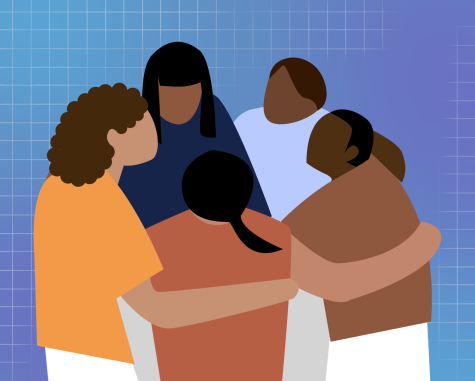Falling through the cracks: Autistic people of color fight for services
August 5, 2022

Editor’s note: This article is from the Communication Department’s award-winning Echo magazine.
Kayden Byard could never quite place what made him different. Byard grew up unsure of where he fit. The first psychologist he sought out was unhelpful. The doctor brought out an old copy of the Diagnostic and Statistical Manual of Mental Disorders and read Byard the criteria for an autism diagnosis as if they were items on a grocery list. The doctor then closed the book and told Byard that he didn’t check the boxes.
Discouraged but undeterred, Byard, who’s Black, pushed on. He knew himself better than anyone and felt a strong connection to many autistic traits. He went from doctor to doctor, expert to expert, in search of an answer, until he was eventually diagnosed with autism at 18.
“I was diagnosed with generalized anxiety disorder. Any time I saw a therapist, they kind of just went back to that original diagnosis,” says Byard, now 21 and a respite caregiver at Clearbrook, a Chicago-based group that works with people with developmental and intellectual disabilities.
Eventually, Byard found a therapist who listened to his concerns. A referral to one of his colleagues led to testing and a diagnosis
Byard’s difficulty getting diagnosed is emblematic of a larger problem: Autistic people of color get less access to treatment because they are diagnosed less than white people. According to the National Library of Medicine, Black and Hispanic children are more likely to be diagnosed with a non-autism related disorder or experience significant delays before receiving an autism diagnosis. And autism characteristics are often viewed as misbehavior, rather than a disorder, which can amplify racial stereotypes.
Dr. Peter J. Smith, associate professor of pediatrics at University of Chicago, recalls an instance where this misconception put a former patient of his at risk.
“He was physically a large person, a young autistic man of color,” Smith says. “It was summertime in Chicago and he was driving with his family with the top down in the car. One of his habits was echolalia, which meant someone would say something and he’d say it right back to them. They had parked, and someone swore at something near the car. He swore right back and ended up putting members of the car at physical risk. Someone pulled a gun because they thought he was being threatening.”
Smith was grateful that everyone walked away from the situation unhurt, but he stressed the prevalence of similar situations. “The more common example is someone of that age getting taken down by security or police.”
Jackie Spinner, executive producer of the documentary “Don’t Forget Me,” says children of color have had the hardest time getting diagnoses.
“What my research has told me is that it’s access to the diagnosis. It’s expensive, Spinner says. Her documentary explores the challenges faced by Moroccan families with autistic children.
“Some of the behaviors associated with autism are brushed off, particularly among young boys of color. It’s not seen through the lens of a developmental issue,” says Spinner, who’s an associate professor of journalism at Columbia College Chicago.
However, more children are being diagnosed with autism. In 2000, the Centers for Disease Control and Prevention found that one in 150 children was diagnosed with autism; in 2018 that number was one in 44 children.
According to the CDC, in 2012, white children were diagnosed with autism spectrum disorder at higher rates than Black and Hispanic children. However, those discrepancies dropped two years later, when more Black and Hispanic children received diagnoses.
Morénike Giwa Onaiwu, who is a writer, researcher and autism advocate, says the profiling and stereotyping that people of color endure daily influences their willingness to seek an autism diagnosis. Parents of color do not want to add another label to their children, who already face stereotypes based on the color of their skin. The diversity of circumstance adds to the issue.
Onaiwu lived in international housing with their parents for years, making many of her differences less obvious. It wasn’t until their family moved out of international housing that things changed.
“I spoke differently, I moved differently, I got in trouble a lot for answering things I didn’t realize were rhetorical questions,” Onaiwu says. “My parents were called to have meetings about me very early on. But initially they just thought it was giftedness because they had me tested and my IQ was high. So I moved to the gifted classes and all the kids there were quirky. That helped me fall between the cracks.”
Onaiwu’s parents, who were immigrants, didn’t pick up on some of their habits and didn’t mention them to a doctor.
“They never told the pediatrician, ‘Oh, she doesn’t make eye contact.’” she says. “They thought a lot of things I did, like playing by myself or lining things up, was just orderly.”
The stakes are high for undiagnosed people; without a diagnosis, resources aren’t accessible. Without support, life is infinitely more difficult.
You can read the entire 2022 issue of Echo, as well as previous issues, on our website.







